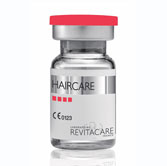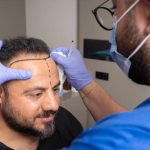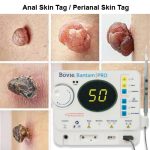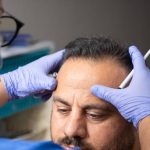CAN TOXIC METALS AND MINERAL DEFICENCIES CAUSE HAIR LOSS?
Minerals in the body are involved in almost all enzyme reactions, metabolic activity and detoxification cycles. They are vital for the effective absorption and proper function of nutrients and vitamins. Our bodies cannot utilize vitamins and other nutrients without a correct balance of minerals, even in trace amounts. Proper mineral balance is essential to avoid chronic fatigue, weight gain/loss, headaches, depression and osteoporosis.
They are vital for the effective absorption and proper function of nutrients and vitamins. Our bodies cannot utilize vitamins and other nutrients without a correct balance of minerals, even in trace amounts. Proper mineral balance is essential to avoid chronic fatigue, weight gain/loss, headaches, depression and osteoporosis.
Mineral imbalances are also linked to oxidative stress that can lead to come cancers.
Today’s North American diet has become devoid of adequate quantities of essential minerals. When mineral deficiencies occur,
toxic metals often replace these vital minerals in the body. Because of today’s highly industrialized society, we are exposed to toxic metals every day.
The presence of toxic metals in the body has been implicated in the onset of chronic ailments such as Alzheimer’s disease, ADD/ADHD, diabetes, autism and Parkinson’s disease as well as infertility and miscarriage. The addition of essential minerals can expel toxic metals.
Various mineral imbalances, as revealed by hair analysis, frequently lead to metabolic dysfunctions before any physical symptoms manifest.
Two common medical conditions which can cause hair loss are deficiencies in iron and zinc – minerals which are essential for the body to function properly. Iron is involved in the production of red blood cells, which carry oxygen around the body. If you are lacking in iron, it can lead to iron deficiency anemia.
Telogen effluvium is the most frequent cause of hair loss and is associated with diffuse and nonscarring hair loss. Essential heavy metals are associated with beneficial effects in humans as well as in other living organisms. However, they may lead to toxic effects when the exposure exceeds the higher tolerable limits. Lead (Pb) and cadmium (Cd) are highly toxic metals that can cause acute and chronic health problems including hair loss.
NUTRIENTS IN THE BODY
Nutritional elements in the body, even in trace amounts, are vital to life, assisting in the production of energy and biochemical processes. Over 3,000 enzyme reactions control metabolism. Of these, at least 85% depend on trace minerals for activity. Today, most North American Diets are becoming devoid of essential minerals. Deficiencies or imbalances among elements lead to hair loss and many serious health condition.
Nutritional balancing begins with a complete assessment including a hair mineral analysis. With proper interpretation, immediate correction therapy can commence.
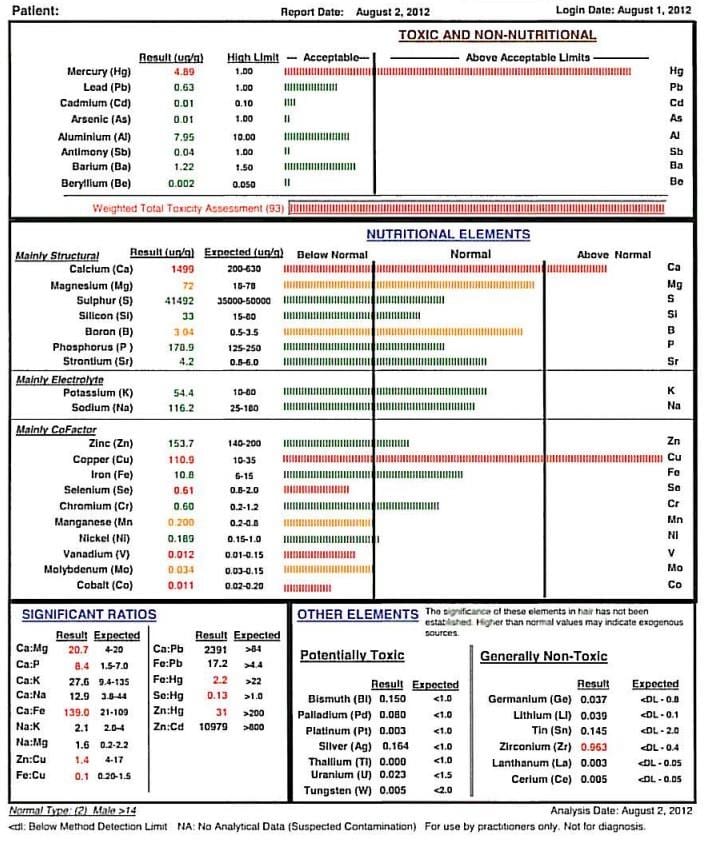
An affordable, non-invasive Hair Mineral Analysis can help establish a nutritional profile to be used by you and our nutritionist to guide in the development of an effective wellness and nutritional balancing regimen.
HAIR MINERAL ANALYSIS
Hair Mineral Analysis is a comprehensive screening test to measure the levels of up to 60 essential minerals and toxic metals. With correct testing and interpretation, one can construct a complete metabolic profile of the human body.
Hair is an excellent biopsy material. It is easy to sample, easily preserved and transported, represents a soft tissue of the body and is a storage and eliminative tissue. As hair grows it forms a permanent record of the body’s nutritional deficiencies or excesses.
Minerals screened include calcium, magnesium, sodium, potassium, phosphorus, copper, zinc manganese, selenium, iron, and cobalt.
Elevated readings can have different meanings depending upon:
- Present symptoms
- The elevated mineral in question
- Whether a specific treatment, regimen or diet is being followed.
- Relationships to other elemental readings.
Toxic metal screening includes lead, mercury, cadmium, arsenic, nickel, and aluminum.
A very high reading may represent a toxic amount of the mineral in the hair, and in the body tissues in general. In the case of a toxic metal, any deposition or accumulation in the hair indicates some degree of toxicity.
High levels of toxic metals inhibit the body’s ability to process and assimilate specific nutritional elements that are essential to good health and have a proven link to many types of diseases.

Some of the primary elements the Hair Mineral Analysis tests for.
Hair vs. Blood Analysis
Data have been compiled from the available world literature on the accumulation and bioconcentration of selected toxic trace metals in human hair and nails and other mammalian hair, fur, nails, claws, and hoofs. The toxic trace metals and metalloids include antimony, arsenic, boron, cadmium, chromium, cobalt, copper, lead, mercury, nickel, selenium, tin, and vanadium. These have been tabulated by toxic metal, geographic area, subjects, sex, age, exposure gradient, analyses in ppm, and authority, from over 400 references. . . The various uses of hair for biological monitoring are reviewed for correlating with environmental exposure gradients, diseases associated with excesses and deficiencies, geographic distribution, and historic trends. It appears to be that if hair and nail samples are collected, cleaned, and analyzed properly with the best analytical methods under controlled conditions by experienced personnel, the data are valid. Human hair and nails have been found to be meaningful and representative tissues for biological monitoring for most of these toxic metals.
Jenkins, D. TOXIC TRACE METALS IN MAMMALIAN HAIR AND NAILS. U.S. Environmental Protection Agency, Washington, D.C., EPA/600/4-79/049 (NTIS PB80103997), 1979
- Research shows that trace minerals and metals are accumulated at concentrations that are 10-50 % higher in hair.
- Blood and urine tests give an instantaneous reading that may be affected by many factors. Urine screening is a most effective tool in measuring the progress of detoxification/chelation treatments.
- Hair analysis gives a long-term reading that is unaffected by recent meals, activities such as exercise, or emotional states.
- Toxic metals rarely remain in the blood or urine for long, but often deposit in the hair where they can be measured over a three-month period.
HOW TO TAKE A HAIR SAMPLE
- Take hair sample from clean, new hair growth at the nape of the neck.
- A sample length of 1 to 1.5 inches is optimal
- A sample size of about 500 mg or about one tablespoon is sufficient.
- Seal in a plastic bag
- Submit to our clinic for analysis.
ORDERING
Your Hair Mineral Analysis includes a 1-on-1 phone consultation with our nutritionist to discuss your report and discuss recommended treatment after receiving your report. Please call 647-492-9093
Comments are closed.









